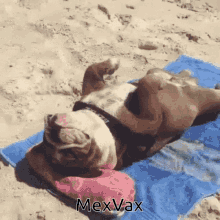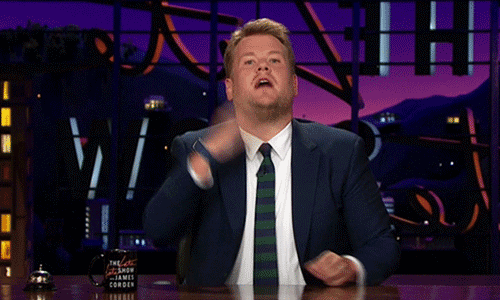What does that even mean? What is a “meta”? How big is it? How long does it last? What impact does it have?
Everyone wants to know what the “next meta” will be, so they can invest in it early and, well, make money.
Is “meta” relevant to you?

Meta is a word that is thrown around a lot. There’s a lot of ambiguity and subjectivity built into it. But it feels very important. Because of that, it can be easily used to manipulate you, unless you spend the time to understand what it means to you.

So let’s try to disambiguate it a little, to become masters of the words we’re using. If you don’t know what a word means, it’s not your word, and others can use it to fool you. Let’s make “meta” our word.

This thread was prompted by the latest, excellent video by @GiancarloChaux:
It’s worth a watch if you have 10m – which you surely do!
In it, he makes some points about what he calls “the next meta”, which he suggests is about experimentation.
In my mind, this collided squarely with my own hypotheses about “the next meta”, which I’ve talked about, for example, in this thread:
Every once in a while the meta changes.
Catching the meta shifts early can pay off big.
Imagine beginning investing in the PFP craze in May last year.
Imho, the Yuga Labs Otherside debacle plays into the next meta shift.
Here’s how.
— Daniel Tenner (swombat.eth) (@swombat) May 1, 2022
Here, I suggested that the “next meta” would be about utility.
But Giancarlo labels that the previous meta!
Is one of us wrong? Are we both wrong? Are we both right?
It all depends on what you mean by “meta” of course.
The term “meta” comes from gaming, where the devs will occasionally change the rules in a patch and cause the set of winning strategies to shift.

Of course, there are no devs of “the NFT space” changing the ruleset. Instead, markets (including NFTs) are a constantly evolving system that absorbs any new “winning strategies” and neuters them automatically. Sometimes, the result of this is… progress.
That has been true in the NFT space. The “meta” last summer could rightly be said to be “any PFP project”. Then, the market got swamped with PFP projects and that stopped that strategy from working so easily.


The next meta was “PFP projects with utility” – or at least, I would label it “PFPs that claimed to have utility”. Next, it perhaps became “PFPs that claim utility and have a solid, high reputation founding team”.


There was a brief moment recently when the meta perhaps shifted to, quite literally, “shit”, with goblintown leading the way. Now @GiancarloChaux suggests another meta shift towards experimentation.

This story of meta shifts has some merit, but it also has some issues.
I think there are two definitions of “meta” colliding here.
One is what I would call the rules meta, or the technical meta, closest to the gaming definition of meta. The rules change, and new strategies become possible.
The other ones is the attention meta.
The rules don’t change that often, but there are gradual and sudden shifts that can occur.
For example, in this thread I wrongly predicted that rising gas prices would make smaller projects unviable:
Thread.
Thanks to the awesome @0x12Y4N from @NFTLlama Discord for helping me see this.
HEADS UP. Most people in NFT-land believe something really important and really false.
Think gas is high because <x> and will go down? Think again.
Gas is never going down.
Here’s why. https://t.co/mkMnIfkZOu
— Daniel Tenner (swombat.eth) (@swombat) October 14, 2021
I was wrong about this. It happens! When you make predictions, sometimes you’re wrong. What actually happened instead was:
- ERC721A improved gas efficiency, particularly around mints, which were a big guzzler
- OpenSea improved their contracts
- Eth went down
This combination of gradual and sudden counter-shifts countered the trend I had predicted, and so smaller projects are still very much viable (good!).

But this rules meta shift has had impact, and projects that ignored it paid a price.
This was the reason the OtherSide mint was so criticised – it was playing by rules that were superseded. It showed a team that was out of touch with the NFT market, and so snatched a black eye for Yuga Labs out of the jaws of victory (largest mint ever?).

Ok, so hopefully we understand what we mean by “rules meta”.
The “attention meta” is something else altogether. This is also important to track, and what imho people like @GiancarloChaux and @Zeneca_33 are very good at taking the pulse of.
The attention meta is about what people are paying attention to right now. Sometimes it can be driven by technicalities (Azuki got extra attention for their innovative contract). Often it’s not.
Attention is fickle, and flickers haphazardly all over the place.

One moment it’s about “old projects” with historical value. The next it’s about artblocks. Then it’s about wolf games and their clones. Then about anime projects. Then about nodes. Then about pixel art. Then about charities. Then about free mints.

Let’s face it, the attention of the NFT space has severe ADHD. It’s all over the fucking place. The moment it rests somewhere long enough that you can say it is “about” that thing… it’s already shifting to the next thing.
Here today, gone in thirty seconds.

Both metas are valuable to track. They can both result in solid profits if you learn how to make use of them.
Imho, the attention meta is a lot of work. To make money from it, you need to be constantly wired into the NFT space, tracking every mood shift.

To make use of the attention meta, you need to be willing to pile into and get back out of projects very quickly. It requires daily or even hourly management of investments.
If you enjoy playing this game and you’re good at it, it can be very rewarding.
And – it’s not for me.

I enjoy my life away from the computer. I am in Geneva visiting my parents rn, and after writing this thread, I will go sit by the lake and read a book.

If I was playing the attention meta, this would be a potentially costly move. I might miss important shifts.
I prefer playing the rules meta. There are fewer things to track there. The shifts tend to be slower, more gradual.
The core question to make use of the attention meta is: what’s hot right now?
For the rules meta it’s: what’s possible?
I find it amusing that right now, the two metas are coinciding. The attention meta, having exhausted itself chasing a new trend every few weeks for a year, is (for now) shifting to experimentation… to exploring what’s possible.

Arguably, that was already and always part of “the meta” – at least the rules meta. But it is where the attention is now. Great. Let’s pay attention to pushing the boundaries of what’s possible. That might even result in a rules meta shift. Interesting!

But I’ve seen this attention meta doing its thing for nearly a year now, and I’m pretty sure that it’s already sniffing out the next hot thing and shifting to that. In a month’s time, it’ll be something else.
Ok, so if you want to play the attention meta game, you know what to do.
What if you want to invest in NFTs but not play this intense, short term game?
How to play the rules meta instead? And is it worthwhile?
The rules meta is about figuring out what’s possible, finding who’s building something awesome with that, and investing in them.
Your answer to “what’s possible” is going to be very personal to you. That’s great. That’s the only way you can have conviction in it.

For me, I’m a fan of startup founders, and I think NFTs, and PFP projects in particular, make possible a fantastic funding model far superior to traditional funding. So I look for projects making use of that model and pushing its boundaries.
To play the rules meta well, an investor should have their own perspective on what’s possible and exciting, back teams that are making it happen and then… wait.
This is the benefit/drawback of playing the rules meta. It takes more time.
Personally, I’m happy to invest in early stage startups, sit on my hands for 6-18 months, and then collect a 10-50x return if I got it right.
If you want your 10x returns by next week, then the rules meta probably won’t work so well. Try playing the attention meta instead.
So… let’s bring this thread to a close.
Was I wrong when I called a meta shift towards “real utility”? Well, kind of wrong, kind of right.
Is @GiancarloChaux right when he says the utility meta is dead? Well, kind of wrong, kind of right.

The utility attention meta is dead, for now.
But, if we’re honest, we should admit that most of the “utility” projects did not actually have utility. They just aped the term, made up fake garbage usually involving staking, tokens and metaverses, obfuscating the question.
The meta of projects being able to get attention just by claiming utility is likely dead (for now). @GiancarloChaux is 💯 right about this.
However, when it comes to the utility rules meta, we’re only just getting started.
Remember that 6-18 months time horizon? Most real utility projects have not had the time to deliver on their promises yet. And their promises are still very much in the realm of the possible.
As they deliver, their value will rise, whether or not they grab the attention.
There have been very few shifts in the rules meta, aka the map of what’s possible with the tech we have.
The emergence of PFP projects was one, and we’re still working through its consequences.
Loot and even, dare I say it, Pixelmon, also stretched out “what’s possible”.
ERC721A did too. When it actually takes hold, ERC721R will too imho (credit to @mai_on_chain and @Intenex from @CuriousAddys for getting that one rolling).
The Ethereum merge might cause a meta shift, or maybe not. We’ll see.
In conclusion – “meta” can refer to different things. Rules about what’s possible. Or where the attention is going.
There are probably other useful definitions. What are yours? Please share them, I’ll RT them.
Be sure to know which definition is being used before acting on a statement about “shifts in the meta”.

TL;DR: Know what you mean when talking/thinking about “the meta”. Is it about what’s possible? Is it about where the attention is? Is it something else? Master the words you use.
Thanks for reading.
gm & gl

Original Thread:
What's the next meta?
What does that even mean? What is a "meta"? How big is it? How long does it last? What impact does it have?
Everyone wants to know what the "next meta" will be, so they can invest in it early and, well, make money.
Is "meta" relevant to you?
— Daniel Tenner (@swombat) July 19, 2022

